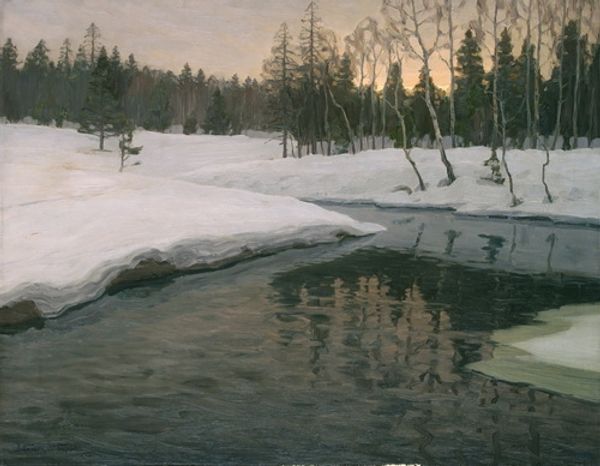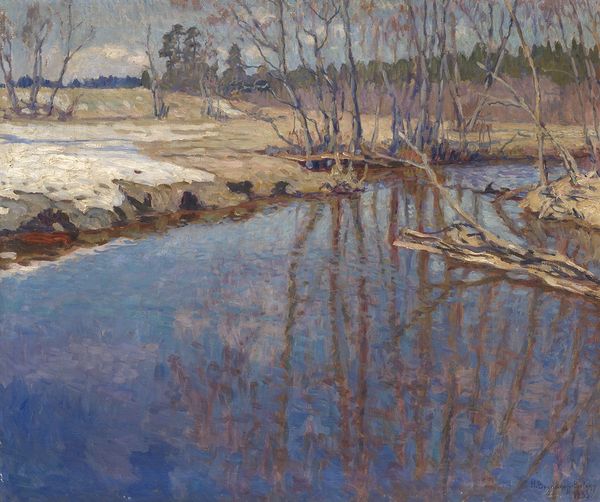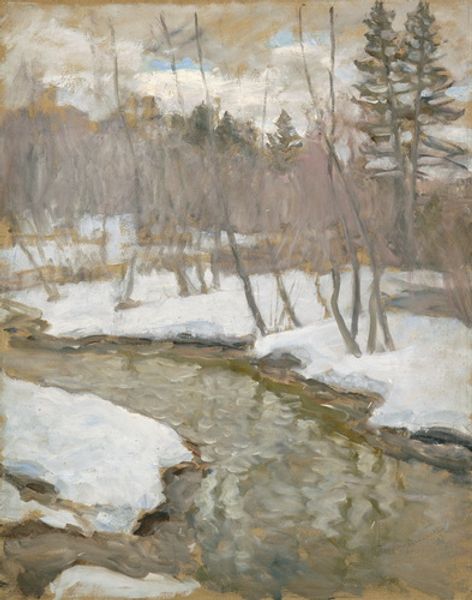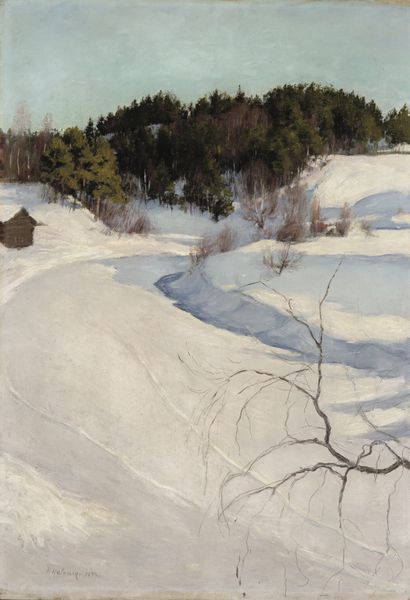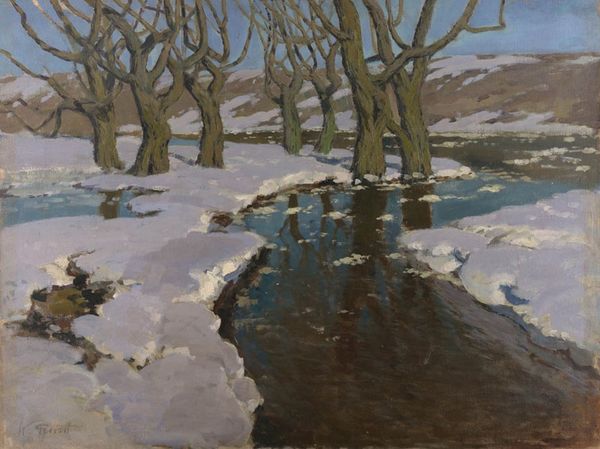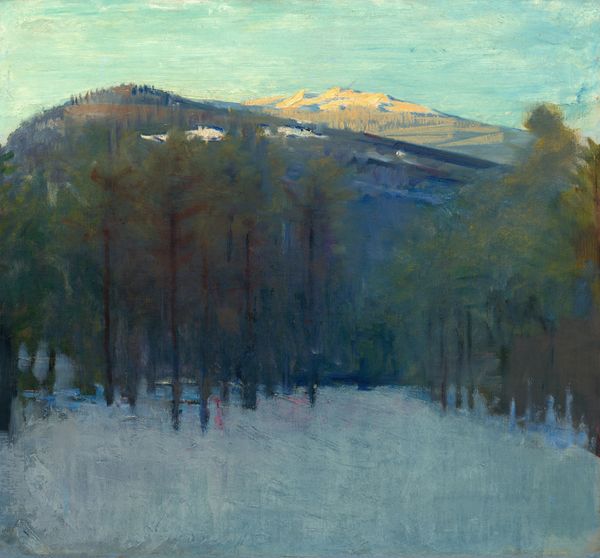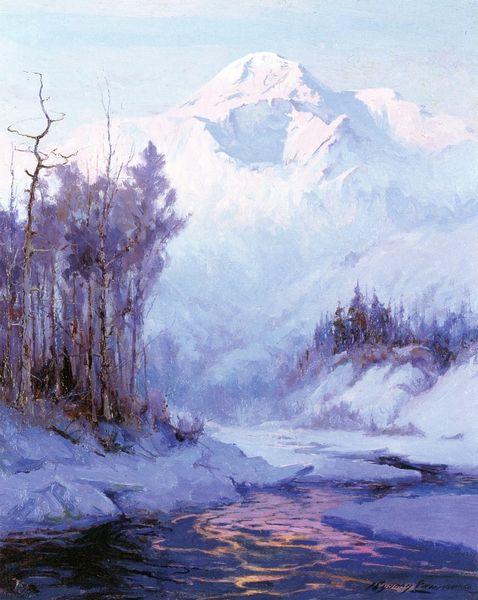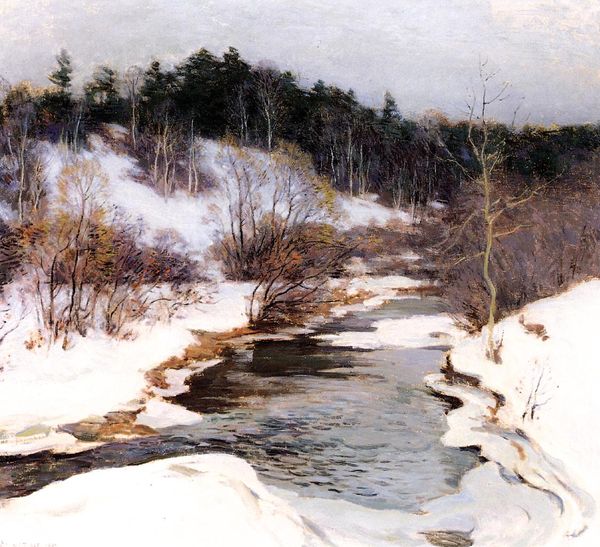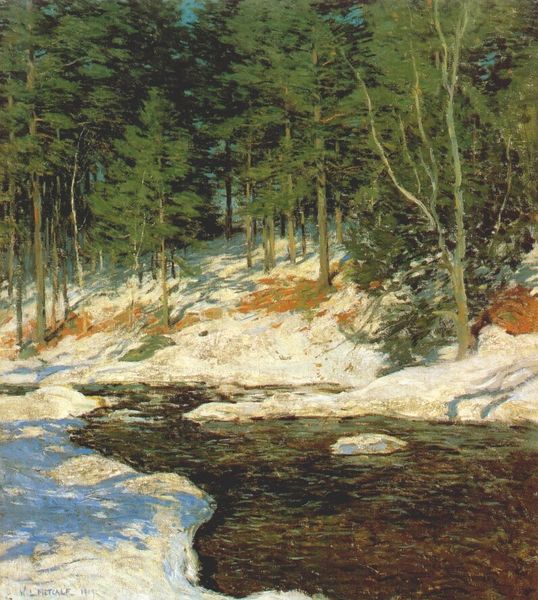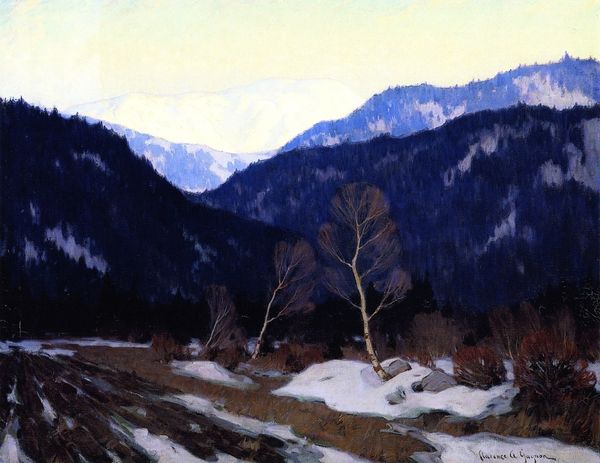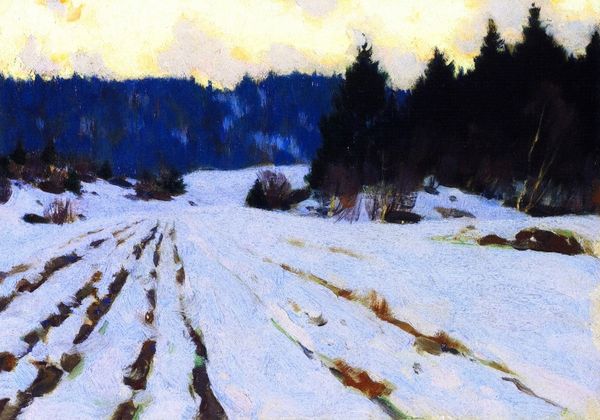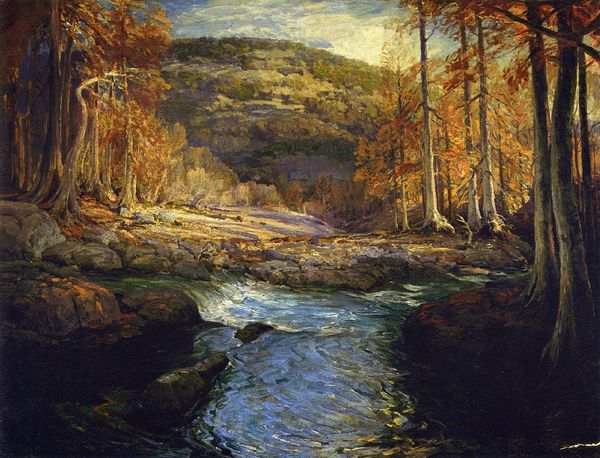
Copyright: Public domain
Curator: Here we have Clarence Gagnon’s "River Thaw," an oil painting from 1913. The piece offers a serene vision of a landscape on the cusp of spring. Editor: The overwhelming stillness is what strikes me. There’s a somber quality too, in the almost monochromatic palette. Curator: Indeed. Gagnon was known for his impressionistic portrayals of the Canadian landscape, and the institutional response, particularly within Canadian nationalism at the time, was enthusiastic. His works reinforced a certain idea of Canadian identity. Editor: And we must ask, who's Canada? Whose identity is being reinforced, and at whose expense? Looking at the composition, the dark, dense forest pressing in on the thawing river almost feels ominous. I mean, spring thaw is life, it is liberation and nature showing its force. Curator: That's an insightful reading. There is a tension present between light and shadow, between the frozen state and the promise of fluidity, but considering Gagnon’s era, perhaps this starkness reflects more on the historical anxieties about change and modernization during a rapidly changing world. He idealizes the Canadian landscape by subduing a violent spring to create an aesthetic statement, that at the end promotes nation building. Editor: Right. The lack of human presence is striking in this piece. There is an implied purity to the space, isn't there? Absent any colonial force. But that absence is, itself, a kind of statement. It sanitizes the landscape, denying Indigenous presence, denying colonial exploitation, and romanticizing the Canadian project of taking the land. Curator: Your perspective adds valuable context. Shifting from what you raise, his brushwork seems deliberate, a mix of broad strokes for the snow and more detailed work for the trees in the forest’s edge. There’s a control over the landscape. Editor: I see that control as an assertion. Art during nation building movements usually take certain roads that show, again, what the status quo has designed for it, especially when trying to define nation, culture, and identity. The aesthetic beauty obscures the violence embedded in these lands, this construction. It reminds me of Fredrick Jackson Turner’s thesis about the end of the Frontier, and this sense of a need for a renewal. It promotes going to the landscapes. Curator: Food for thought indeed! Seeing Gagnon’s work through this critical lens offers so much complexity. Editor: Yes, the piece prompts so much interrogation on identity, territory, representation and what nationalism means.
Comments
No comments
Be the first to comment and join the conversation on the ultimate creative platform.
